Translate this page into:
Simulator based Spatial Disorientation training in the Indian Air Force
Abstract
There is worldwide acceptance that Spatial Disorientation (SD) prevention strategies need to focus on four major categories: education, training, research and equipment. Physiological training, to augment the didactics, involving demonstration of illusions and the limitations of human orientational mechanisms is considered to be the most important dimension of the SD prevention strategies. The aircrew of fighter stream in Indian Air Force (I AF) receive instructions on SD during various stages of flying training and later in the flying squadrons. Earlier, the demonstration of SD was limited to vestibular illusions generated by head movement at low G in a human centrifuge As a proactive step towards SD prevention, IAF has acquired Air Fox DISO SD simulator. Dedicated and structured simulator based SD training of aircrew was initiated in August 2004. This study has been undertaken to assess the aircrew perception of the simulator based SD training. SD training consists of a five day course involving lectures and simulator based demonstration of active and passive illusions. A questionnaire based feedback was obtained from the aircrew at the end of each course. The response of 178 pilots flying different fighter aircraft in the IAF was analyzed for the purpose of this study. Mean flying hours of pilots was 455 hrs. Prior to training, 95 % of pilots had satisfactory to good and 5 % had very good to excellent SD awareness. Post training, 12 % pilots had good SD awareness while 88% reported it to be very good to excellent. Realism of illusions in the simulator was found to be satisfactory by 15% of pilots and good to excellent by 85%. 49% of pilots reported poor to satisfactory realism of controls and displays in the simulator while 51 % found it to be good to very good. 95 % of pilots found the simulator to be good to excellent in imparting training for recognition of SD conducive conditions. 90 - 97 % of pilots rated the simulator based training as good to excellent in reinforcing trust in instruments and ability to initiate corrective actions. 96 - 98% of pilots reported as good to excellent the cost benefit and the quality of simulator based SD training. The subjective validation of SD simulator and training to reinforce their theoretical knowledge is very encouraging. Based on the findings of this study, it is prudent to reduce the duration of the course and increase its frequency, to impart SD training on the simulator to all the fighter aircrew of IAF.
Keywords
Aircrew
Spatial Disorientation
simulator based training
Spatial disorientation (SD) is one of the major causes of military aircraft incidents and accidents as compared to other in-flight physiological problems. Regardless of the age and in-flight experience, all aircrew are vulnerable to disorientation in their flying career. SD is categorized into three types-Type I (unrecognized), Type II (recognized) and Type III (incapacitating). Historically, 70 to 80 percent of aircraft mishaps that are SD-related are Type I. Type II SD incidents account for approximately three percent, and Type III SD is statistically insignificant. The mishaps in the remaining 17-27 percent cannot be classified into one of the three types. The appreciation that SD is a manifestation of human physiological limitations in the in-flight environment has led to adoption of SD recognition and awareness training of aircrew as the mainstay in SD prevention [1-11].
In-flight awareness and training of various illusions is ideal, but it is not possible to safely demonstrate many of the disorienting conditions during actual flight. In the IAF, the aircrew have some experience in recovery from unusual attitudes during the IF training. The aim of this training is primarily to teach aircraft recovery and not the causes or preventive aspects of disorientation. Pilot recognition of illusions can be taught using the Barany chair or the human centrifuge, although it is limited to demonstrating some of the vestibular induced gyral illusions only.
ASCC (Air Standardization Coordinating Committee) has defined the minimum Aviation Medicine/Physiological Training of Aircrew in Spatial Disorientation pertaining to classroom curriculum and has made general recommendations about ground-based and in-flight demonstration and training [12]. INFO PUB 61/ 117/8 Spatial Disorientation Training Curricula provides information of each member nation’s SD training curricula in a standard format [13]. Devices offering demonstration of illusions on the ground and high-fidelity dedicated machines capable of simulating specific flight profiles to demonstrate SD to pilots are now being used by the various air forces [1, 5, 6-11].
As a proactive step towards SD prevention the IAF acquired the Air Fox DISO SD simulator. Dedicated and structured simulator based SD training of IAF aircrew was initiated in August 2004. The current study has been undertaken to assess the fighter aircrew’s perception of the simulator based SD training.
Material and Methods
Air Fox Disorientation Simulator was installed at the Institute of Aerospace Medicine (IAM) at Bangalore in May 2004. The SD simulator consists of a six degree of freedom system with an additional continuously rotating yaw mechanism to generate linear and rotational motions. It utilizes advanced electronic controls, computer-model driven responses and realistic graphic displays. The system intends to provide safe and realistic real time disorientation simulation [14].
The five day training schedule embarked upon by the IAF involved lectures on SD mechanism and about two hours of simulated exposure to SD illusions. A questionnaire based feedback was obtained from aircrew at the end of each course. The responses were later converted to descriptive statistics.
The simulator training consisted of demonstration of thirteen common illusions of fighter flying. Five of these illusions involved passive operation of the simulator and served to demonstrate the limitations of the orientational senses. The eight active illusions involved flying a pre-programmed profile with closed-loop control of the simulator by the pilot. These profiles were: coriolis (active and passive), somatogyral, oculogyral, nystagmus, autokinesis, spin recovery, leans, dark night take-off, black hole approach, false horizon (clouds), illusions of runway width and slope.
Results
The response of 178 IAF aircrew of fighter stream flying different aircraft to the five (05) day simulator based SD training was analyzed for the purpose of this study. Mean flying hours of the pilots were 455 hrs with a range from 140 hrs to 2800 hrs.
The feedback to questions were divided into the following five areas:-
SD awareness
SD simulator realism
Simulator training effectiveness
Training value of illusion profiles
Other aspects of SD training
The first question addressed the level of awareness of SD. Fig 1 shows that prior to training 95% of pilots had satisfactory to good SD awareness and only 5% had very good to excellent awareness. Post training 12% pilots had good SD awareness while a majority (88%) reported it to be very good to excellent.
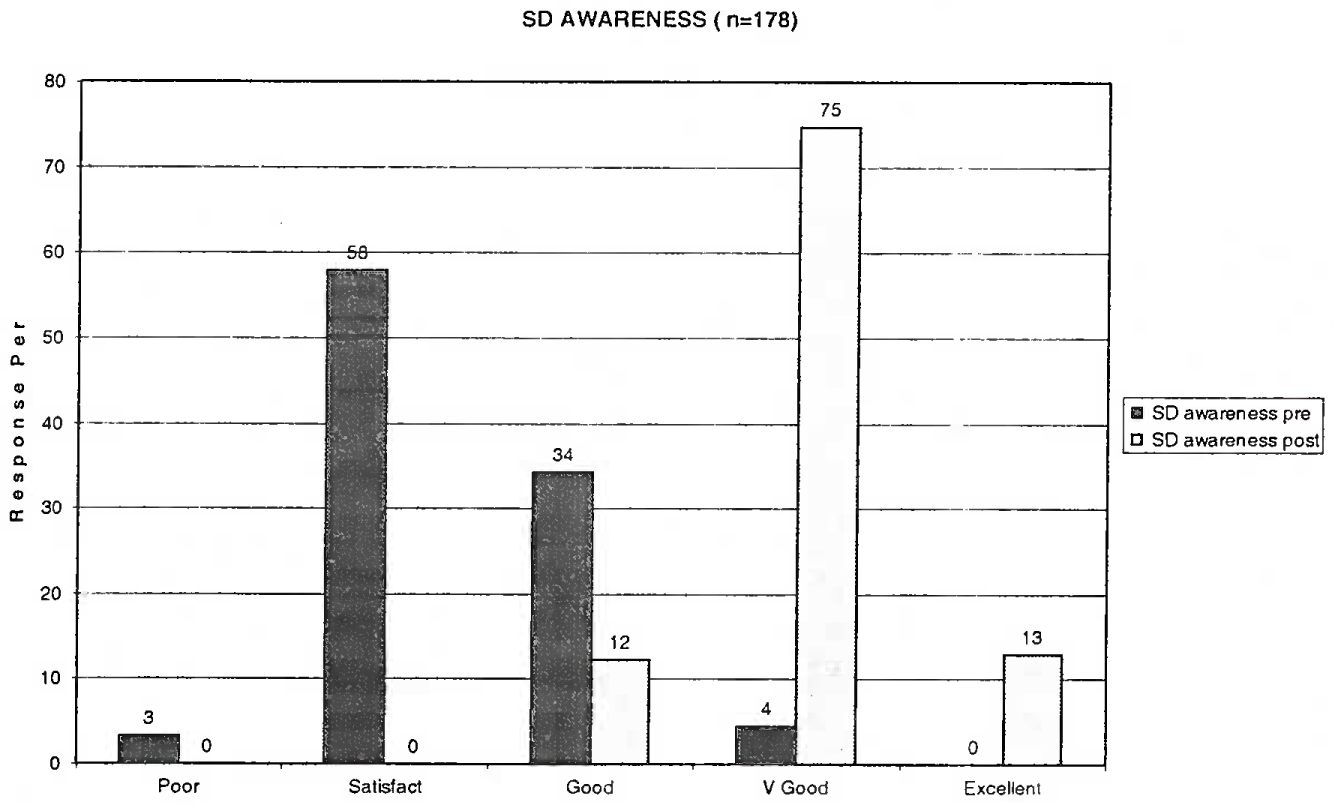
- SD Awarenes Pre and Post Simulator Training
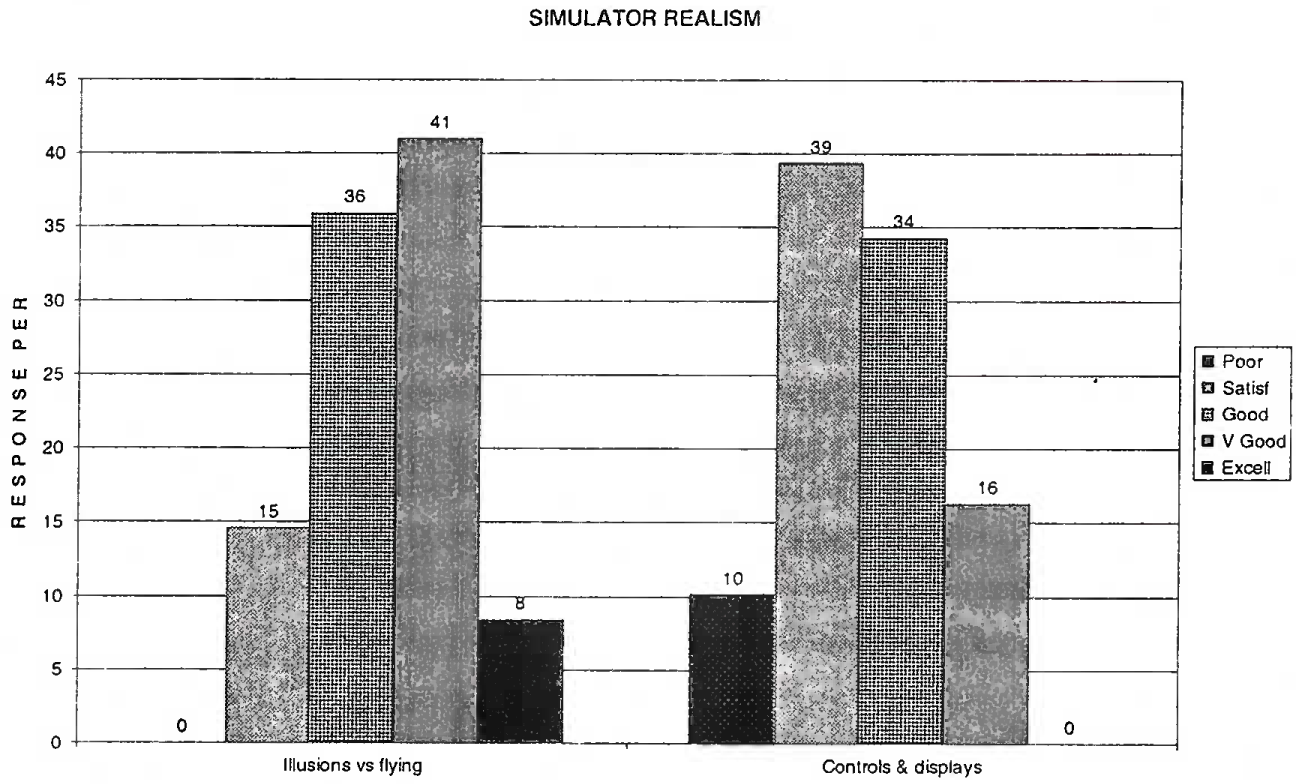
- Simulator realism

- Simulator training effectiveness
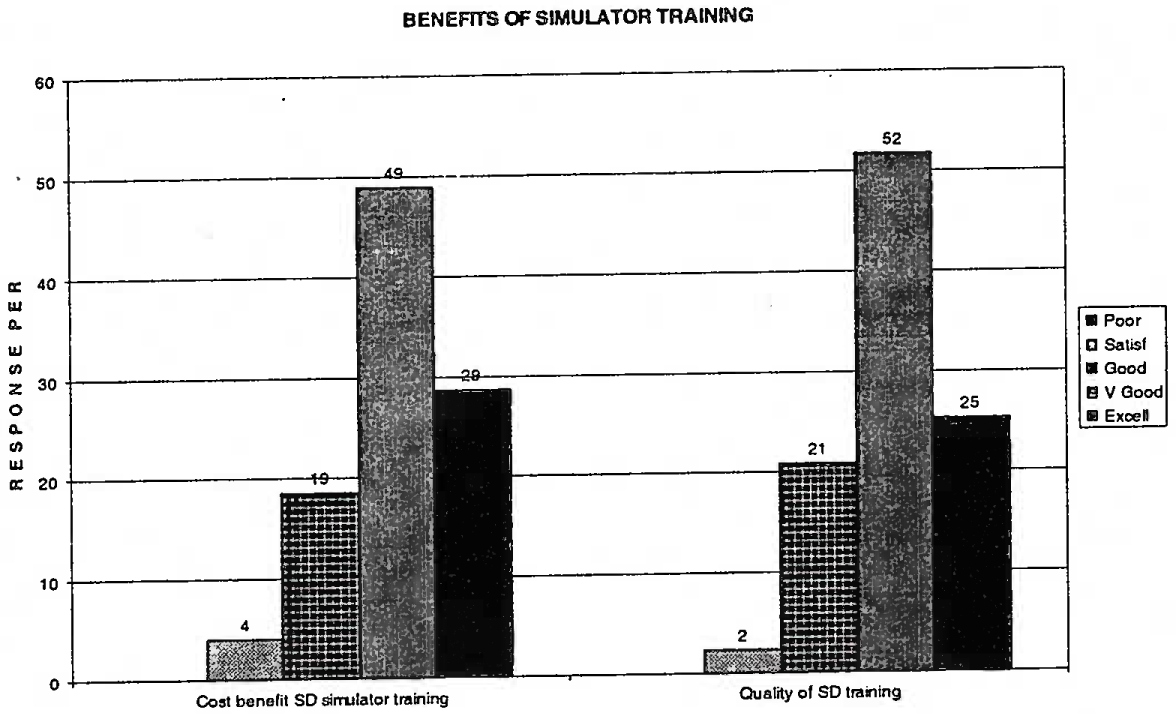
- Simulator training benefits
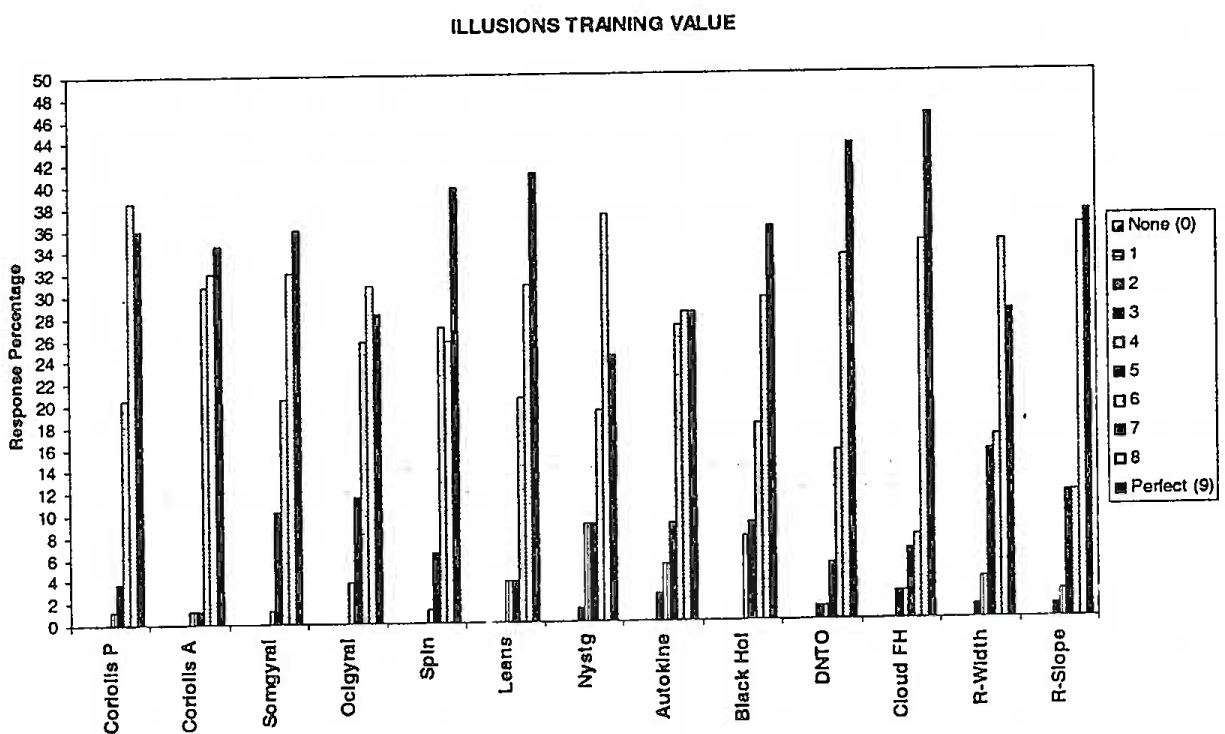
- Training value of illusions
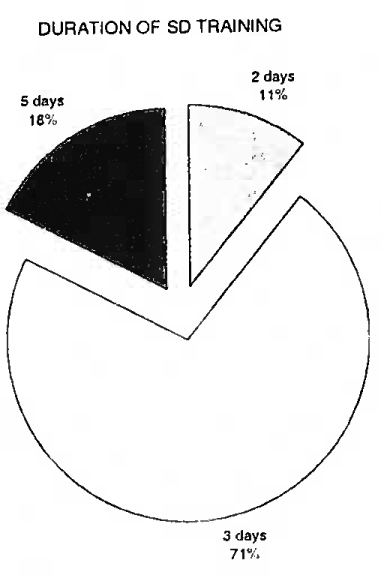
- Aircrew opined duration of SD training
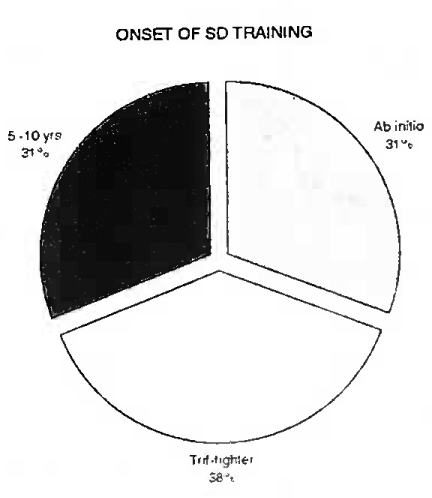
- Aircrew opined onset of SD training
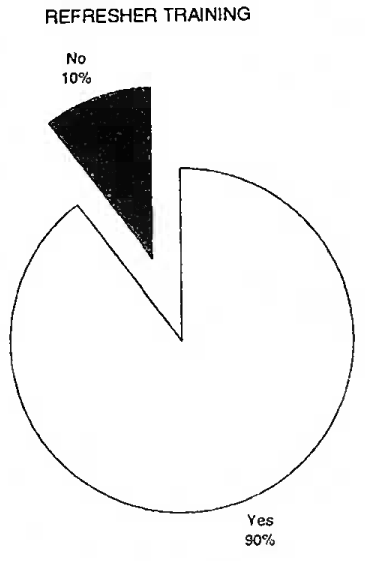
- Aircrew opined refresher SD training
The next two questions were related to the perceived realism of the SD simulator. As seen in Fig 2, realism of illusions in the simulator was found to be satisfactory by 15% of pilots and good to excellent by 85%. 49% of pilots reported poor to satisfactory realism of controls and displays in the simulator while 51% found it to be good to very good. Fig 3 indicates that 95% of pilots found the simulator to be good to excellent in imparting training on recognition of SD conducive conditions. 90-97% of pilots rated the simulator based training as good to excellent in reinforcing trust in instruments and the ability to initiate corrective actions
In terms of benefit and quality of SD training, 96-98% of pilots reported the perceived cost benefit and quality of simulator based SD training to be good to excellent (Fig 4).
Figure 5 shows the response of 78 of the fighter aircrew towards the training value of each of the 13 pre-programmed simulated illusions. They were rated beyond 5 in a scale of 0 - 9 (0: none, 9: perfect).
165 of the 178 aircrew submitted their opinion on the duration, timing in career and need for refresher course of the simulator based SD training (Figs 6, 7, 8).
Discussion
Curricula of the simulator based SD course at IAM aims to augment ground based spatial disorientation (SD) training imparted to the aviators of IAF. The objectives are: awareness of the limitations of the physiological orientational mechanisms; awareness of conditions predisposing to SD; demonstration and experiencing of common in-flight illusions and to enhance the trust in instruments and ability to initiate corrective action.
Subjective feed-back from the aircrew on the effectiveness of the SD simulator and training have been encouraging. Majority (88%) of them have reported an improvement in their awareness of SD to be very good to excellent after the course. The subjective validation of the simulator indicates that 85% aircrew have found the realism of the illusions to be good to excellent. Kallus [11], also found the Air Fox DISO simulator to be able to demonstrate disorientation phenomena realistically. Flowever, the realism of the controls and displays in the simulator cockpit have received average ratings with 49% aircrew finding them to be poor to satisfactory and the other 51% good to very good. The SD simulator has a generic cockpit with controls and displays which do not conform to any of the fighter aircraft currently in operation in IAF. To familiarize with the controls and displays of the simulator, each aircrew is given sufficient duration of free-flight prior to the onset of the passive and active training.
A vast majority (95%) of aircrew have indicated the simulator to be good to excellent in imparting effective training for recognition of SD conducive conditions. Estrada [1], has reported that 69% of aircrew found simulator training better preparing them to recognize factors which make SD more likely. 90 - 97% of pilots have rated the simulator based training as good to excellent in reinforcing trust in instruments and ability to initiate corrective actions. In the study by Estrada [1], 67-72% aircrew rated the simulator training to improve their situational awareness, mission decision making ability and crew coordination skills.
Towards subjective validation of the SD training, 96% of aircrew have rated the simulator good to excellent as a cost effective SD training tool and 98% have rated the quality of SD training to be good to excellent. Estrada 11 ], also found that 90% of the aircrew had opined that ail aircrew would benefit from simulator based SD scenario training. The response to training value of the 13 pre-programmed illusions on the Air Fox DISO simulator has clustered to the right of the midpoint in a scale of 0-9 indicating a high acceptance by the aircrew.
The aircrew have indicated an ideal duration of training to be of three days and nearly 70% of them felt that the initial simulator based SD training should be started at the abinitio level of flying experience. Also, 90% of the aircrew have shown a desire for refresher SD training during their further flying career. The ASCC recommends refresher training at 3-5 yrs [12, 13].
During the course of imparting the SD training, aircrew have reported the following to the authors that, “You make Believers from Nonbelievers”, “We can now give meaning to our feelings” and “ We are now sure that experience does not make us immune to SD”.
Conclusion
The IAF has kept pace with its contemporaries in initiating a dedicated and structured SD training for its aircrew. The simulator based training has facilitated realistic SD illusions to be produced in a safe, ground-based environment and enabled the aircrew to relate the demonstration to in-flight situations. The current study analyses the SD awareness levels of the pilots and post SD training benefits accrued. The positive subjective validation of SD simulator and training to reinforce their theoretical knowledge is very encouraging and is expected to improve the SD coping skills of the pilots. The present endeavor is to expose all the aircrew of fighter stream of the IAF to the simulator based SD awareness course.
References
- Use of simulator : Spatial Disorientation awareness training scenarios by the U.S. Army and National Guard.
- Spatial Disorientation In: Ernsting J, Nicholson AN, Rainford DJ, eds. Aviation Medicine (3rd ed). Oxford: Butterworth & Heinmann; 1999. p. :419-436. In:
- [Google Scholar]
- Spatial Orientation in Flight In: Dehart RL, Davis JR, eds. Fundamentals of Aerospace Medicine (3rd edition). Baltimore: Williams & Wilkins; 1996. p. :309-398. In:
- [Google Scholar]
- Spatial Orientation in Flight: AL-TR-1993-0022.
- Canadian Approach to Spatial Disorientation Training. Human Systems IAC GATEWAY. 2001;XII(3)
- [Google Scholar]
- A SD-Demonstration Program for German Navy Tornado Aircrew: First Results. in http://www.spatiald.wpafb.af.mil/HFM/MP-086-19.pdf
- Desderriona: Advanced Disorientation Trainer. in http://www.amst.co.at/products/producti.htm and http://www.tm.tno.nl
- Evaluation of Spatial Disorientation Simulator training for Jet pilots. International Journal of Applied Aviation Studies. 2004;4(1):45-55.
- [Google Scholar]
- Working Party 61 Aviation Medicine/Physiological Training of Aircrew in Spatial Disorientation. Air Standardization Coordinating Committee ASCC AIR STANDARD 61/117/1
- Working Party 61 Spatial Disorientation Training Curricula. Air Standardization Coordinating Committee ASCC INFO PUB 61/117/8
- Air Fox Disorientation trainer and kinematic parameters. from http://www.amst.co.at






